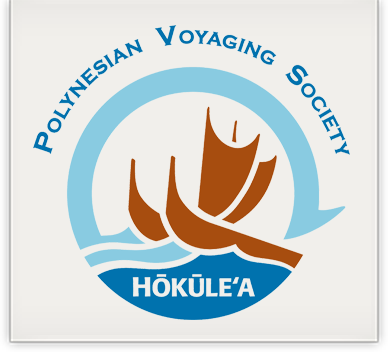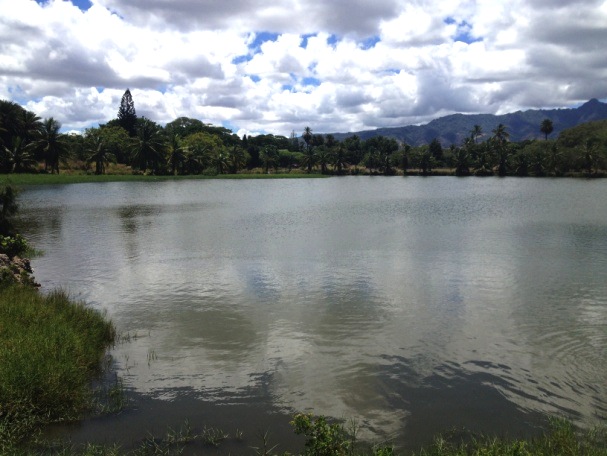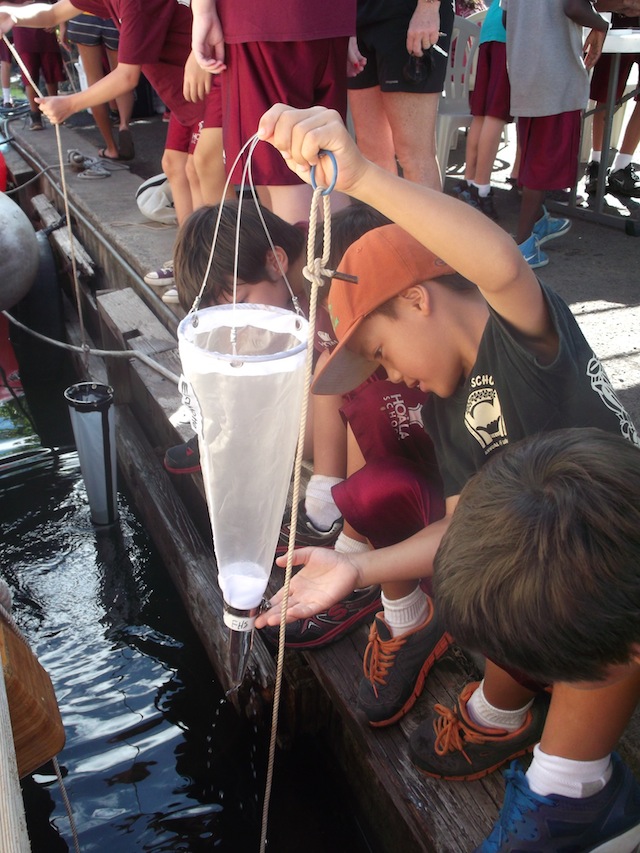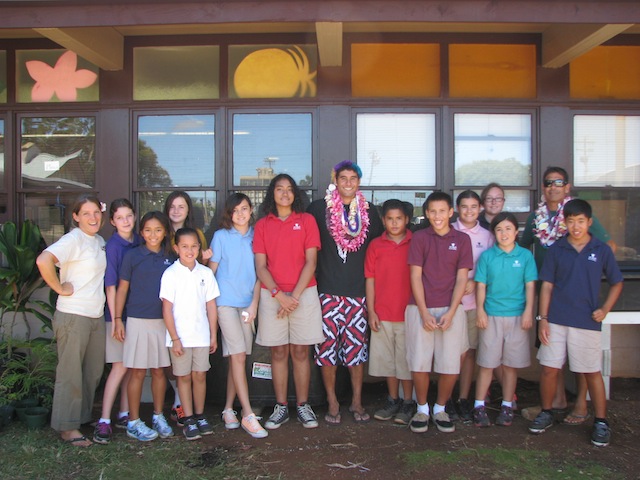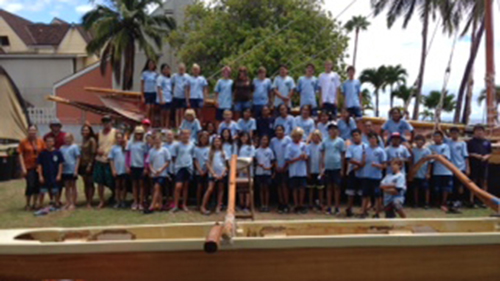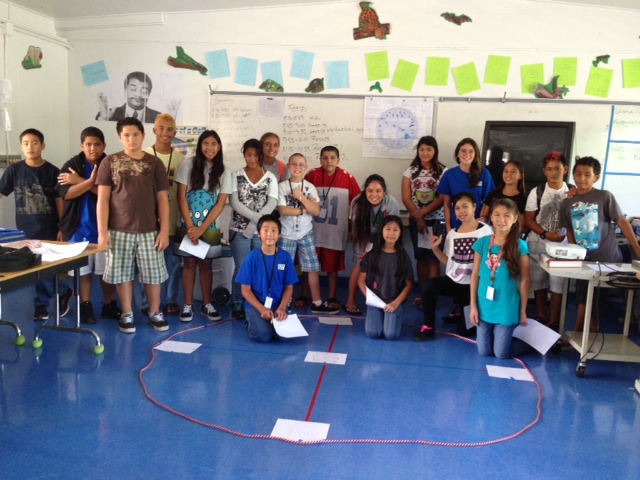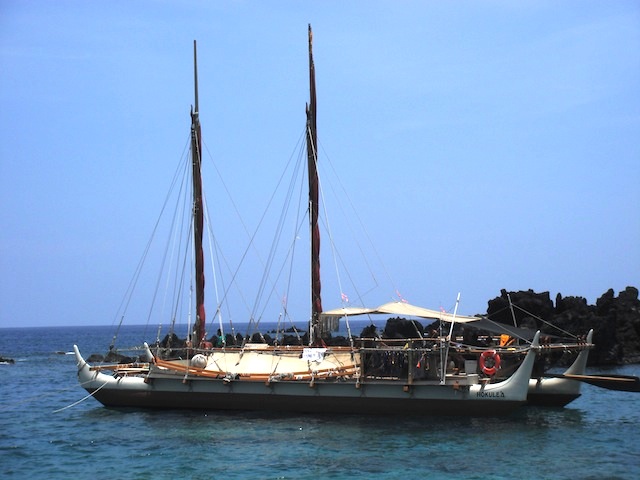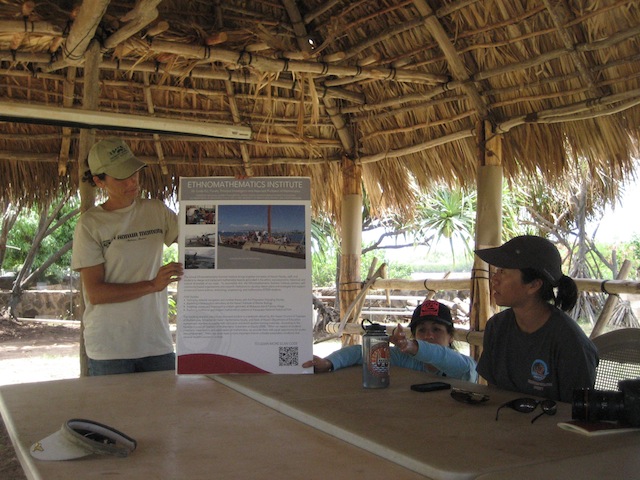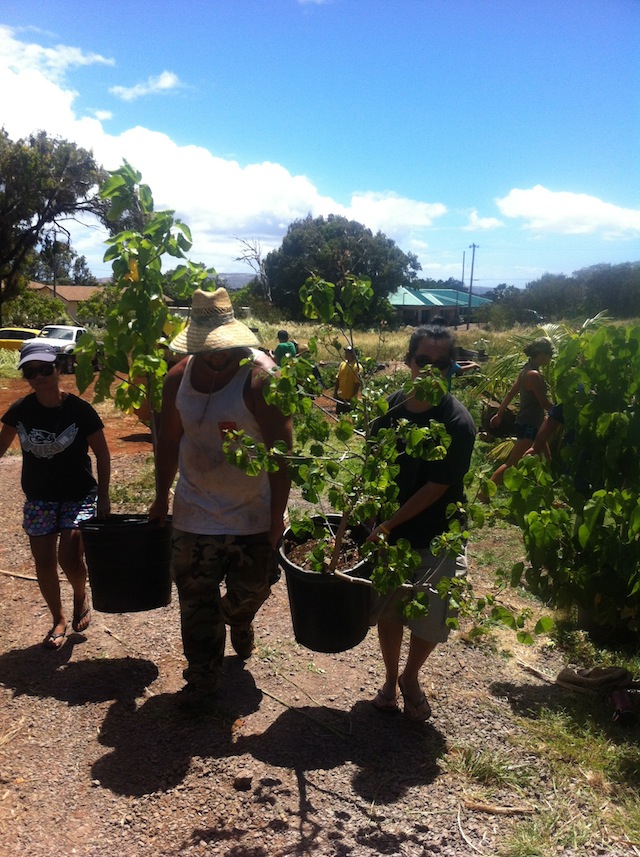Molokai (Tara O’Neill, Mahina Hou and Mililani Hanapi). On the morning of July 9, 2013 crew members of Hōkūle‘a took part in their first learning journey on the island of Molokai. This journey encompassed many stops but one theme. The focus was on kupuna who have dedicated their lives to preserving and protecting the culture, land and history of Molokai and have done so without grant or external funding and often in conflict with the regulations and intentions of the state and federal government. All of the kupuna who were so kind to share their manao with us, have dedicated their lives to the types of peaceful, courageous and productive lifestyle that helped sustain the Native Hawaiian renaissance in the 1970ʻs and reminds current and future generations of the multiple means of protecting a culture and standing up against oppression.
Our journey began driving east under the guidance of Auntie Mililani Hanapi. She started by sharing the history of the land from Kawela to Pualei. During the time of Alapai nui, before the time of Kamehameha, this land area was engaged in a heated battle involving four armies from O‘ahu, Kauai, Maui and Hawaii. The armies of Oahu and Kauai sought to control the island of Molokai because of its strategic location within the island chain and because the island was a rich food source. The armies of Hawaii and Maui formed an alliance with Molokai and fought to protect her and her people. Kamalo was where the fighting began with the Hawaii, Maui and Molokai forces pushing back the Oahu and Kauai armies to Naiwa and Kalamaula on the west side of the island. There were many lost on both sides. Kamalo was one of three landing sites visible from the main channel when sailing the Pu‘u O Mo‘o a Kamalo served as a visual guide to the harbor.
Our next stop was Puuloli, a look out point in the ahupua‘a of Ahaino. From Puuloli here we could see the harbor of Honomuni. This is the second port you can see from the main channel along the south shore. Here Auntie Mililani and Uncle Alapa‘i explained how this land (and their home) had been pasted down for generations through Auntie Mililani’s ancestors and how they have dedicated their lives to reclaiming their native lands and over coming insurmountable odds. Auntie Mililani and Uncle Alapa‘i are renown artist and educators of Hawaiian history. They have regained rights and access to their lands in their ahupua‘a and plan to build a museum to educate others to preserve the history of this land and the multiple generations who have inhabited it.
We where shown an 1893 survey map done by M.D. Monsarrat of the Honomuni Fishery/Honomuni Harbor. Three Fishponds line the shore Kiha loko,Waihilahila and Kualaalamihi. Kiha loko is dated at approximately 600 years old and the linage of the land can be connected to voyagers from Tahiti. Six families link a part of our past on Molokai to Kapukapuahakea or Taputapuatea . The names are recorded as Haua, Kahalanui, Kalahookaalii, Kauluna, Moelehu, Namahana. These names are linked to Kapukapuahakea a migration site.
On the North shore in Wailau is also a heiau known to the people of Molokai as a Tahitian Heiau. Molokai has three known landing sites. The third one is Halawa Valley and is said to be one of Hawaii’s oldest landing sites first visited by people who sailed from Marquesas. This place is located at the bottom of Pu‘u O Hoku (the hill of stars) located on the eastern most tip of Molokai. Auntie Mililani and Uncle Alapa‘a believe it is important to malama, take care and know these places because it is important to understand the connections of the place and how people are connected to the land.
Uncle Maka, a Hōkūle‘a crew member, summarized the importance of understanding the history of this land, it’s history, it’s culture and it’s people by saying, “you gotta see what no can see. You gotta hear what no can hear”. This is the goal of Aunty Mililani and Uncle Alapa‘i, to make visible what we can no longer see by sharing the stories of this place and in so doing bringing connections between the people.
The third stop on our journey was to Uncle Leimana Naki’s fishpond where we engaged in a service learning project to help maintain the pond walls. Here the Hōkūle‘a crew members were taught the history of this place and introduced to the multiple species of sea life who live here and have served as a critical part of the Native Hawaiian diet for generations. Uncle Leimana expressed his excitement that many school children on Molokai visit the fishpond, learn about the culture and help to maintain this place but called on men and women of the islands to “do their part to build and maintain fishponds and culture”. He then posed a questions to the crew: “You only have a short time in life. What are you going to leave?”
For Uncle Leimana, this place is his legacy and he proudly explains how this fishpond was built and maintained independent of government or corporate grants. In his words, “it is not part of the system” and this he believes is important for maintaining the integrity of the cultural connection to this place.
The final stop on our journey was to the ohana lands of Hōkūle‘a crewmember, Mahina Hou and his wife Tammy. Historically, Halawa Valley is thought to be one of the first places inhabited by Native Hawaiian people. Generations ago, this land was rich with lo‘i fields and free flowing streams. It was know as the land of plenty as illustrated by the meaning of the place name: Ha (breath of life) and Lawa (adequate or enough). This valley once had streams with pleanty of fish and rich land for farming kalo. However, the lo‘i and the streams that served them were damaged by tidal waves and floods. With the loss of their fields people stopped farming this land and moved. In 1996 Mahina Hou, Tammy and their children began to restore the streams and kalo once abundant on their ancestral lands. Hōkūle‘a crew members were honored to assist in this restoration process by sharing fellowship as they helped to maintain the lo‘i and aid in the multifaceted process of Malama Honua.
zp8497586rq
